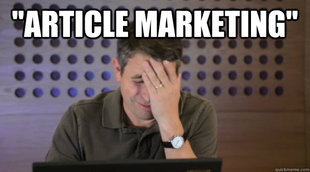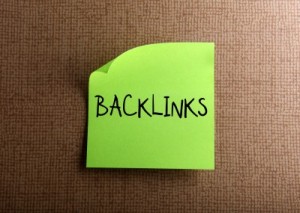Off the cuff
A New Approach to Providing Employee Feedback for Small Business Owners
January 22, 2013 Sometimes you just can’t figure out how to deal with employees. Take Rebecca your receptionist. She’s excellent with clients, knows exactly what calls to put through and when to take a message, dresses professionally, and gets along with everyone in the office. She can juggle answering multiple phone lines while greeting multiple clients with ease, and is great in a crisis.
Sometimes you just can’t figure out how to deal with employees. Take Rebecca your receptionist. She’s excellent with clients, knows exactly what calls to put through and when to take a message, dresses professionally, and gets along with everyone in the office. She can juggle answering multiple phone lines while greeting multiple clients with ease, and is great in a crisis.
On the other hand, as far as performing her day-to-day duties, you can’t complain as to accuracy, but let’s just say prioritizing isn’t Rebecca’s strong suit. Take ordering office supplies. Sure, you never have to worry whether or not you’re going to run out of paper clips – but not when Rebecca somehow thinks getting the office supply order into the vendor is more important than the unfinished monthly report sitting on her desk – a report you need for this afternoon’s weekly sales meeting.
You’ve tried giving her positive feedback – you’ve tried giving her negative feedback, both to no avail.
Things aren’t always “either or” as in “either the employee’s behavior merits positive feedback OR the employee’s behavior merits negative feedback.” The world we operate in has a tendency not to be that straightforward – especially when we’re talking about human behavior, even more so when the subject is employee behavior. You may think you’re limited to one or the other of these approaches – but maybe what Rebecca needs isn’t feedback – maybe Rebecca needs feedforward.
Paying it Forward
You might have seen the movie “Pay It Forward” where the premise was that whenever anyone did a good deed for you that you should “pay if forward” to three other people. The idea is put forward by a little boy responding to a school assignment to “Think of an idea that could change the world.”
Now, that’s a pretty tall order – but Dr. Marshall Goldsmith professor of executive education at Dartmouth, prolific author, and well-known management thought leader has an idea that just might change the way small business owners approach managing employees. His idea? Instead of providing employees with feedback he proposes a process he calls feedforward.
Traditionally feedback has been “top down” meaning that a manager (top) provides feedback to an employee (down) regarding their performance. Fortunately the field of management has progressed to acknowledging that, while employees can learn from managers, it is also true that managers can learn from their employees. This has led to better communication between management and employees.
However, Goldsmith points out a fundamental flaw within both approaches: they focus on the past instead of the “infinite opportunities that can happen in the future.” Furthermore, Goldsmith asserts that focusing on the past is “limited and static” whereas focusing on the future can be “expansive and dynamic.”
True Balance
The notion that feedback should be “balanced” usually means the attempt to find some sort of balance between how many times you provide an employee with negative feedback versus how many times you provide an employee with positive feedback. It certainly doesn’t take a Ph.D. in psychology to realize that too much negative feedback will most likely be de-motivating whereas too much positive feedback certainly isn’t going to improve an employee’s performance outside whatever it is they are already doing well.
This is where Goldsmith’s approach shines. Instead of struggling to come up with some impossible ratio between negative and positive feedback, the focus shifts to making observations about the past within the context of positively changing the future.
A Feedforward Conversation
Feedforward is not some inapplicable academic approach to managing employees at your small business. Feedforward is a process versus a “reprimand” or “compliment” you give an employee. Feedforward is a two-way conversation. Let’s take a look at what that conversation might look like with Rebecca the receptionist:
Small Business Owner: “Rebecca, I’d like to take a few moments to discuss this month’s report with you.”
Rebecca: “Sure.” (Rebecca is thinking: I wonder what I did wrong?)
Small Business Owner: “Before we begin, I want you to know that the goal of this conversation is to focus on how we can better use this report in the future to help our sales team. What we’re talking about here is what you can do to help make that happen, as well as how I might be able to help you as we move forward. I’d like to use this week’s report as an example we can learn from. How does that sound to you?
Rebecca: “Great.” (Rebecca is thinking: This is weird, I think my boss wants my help, not just tell me what to do.”)
Small Business Owner: “OK, so tell me what you think about how things went this week.
Rebecca: “I guess it was so sort of hurried. I almost didn’t get it done in time.”
Small Business Owner: “Why do you think that was?”
Rebecca: “Well, I had to get the office supply order out which meant I had to take inventory and that took a while.”
Small Business Owner: “Making sure everyone has the supplies they need is important. How do you think you could make certain that those two responsibilities don’t come into conflict in the future?”
Rebecca: “Hmmm…maybe I should change the day I do supply ordering to Mondays. Sales meetings are always on Fridays. That would give me three complete days to devote to the report. We could even plan to go over the report on Thursday morning together to make sure there aren’t any problems or errors.”
Small Business Owner: “I think that’s an excellent idea. You definitely got that priority straight. I’d like you to take a look at your duties and provide me with a schedule that allows you to meet your priorities. Let’s meet at ten next Tuesday to do that.”
Rebecca: “OK, but…” (Rebecca is thinking: She wants ME to set priorities?) “Well, what if I don’t prioritize things correctly?”
Small Business Owner: “We’ll work together on that. You know, Rebecca, you’re the one doing the work. You know what happens in the front office. I’d like to get your take first before I make any decisions as to how we want to prioritize your duties. Does that make sense?”
Rebecca: “It does, and I’ll be sure to do my best.”
– Guest Authored
Merchant Processing Resource
https://debanked.com
MPR.mobi on iPhone, iPad, and Android
Is Google Your Only Web Strategy?
December 31, 2012Every business wants to be found in search. To most, being found means top placement in Google’s search results for keywords or phrases that are most likely to convert into a lead, sale, or customer. That begs the question… how does one get that top placement?
While many are now accusing Google of monopolizing or manipulating the search results to promote pages and products that earn them revenue, they are still unique in the sense that one simply cannot buy top placement in organic rankings. The Google search system was originally designed to rank pages based on both how many other pages linked to a page and how important those linking pages were. It was a relational system called PageRank that theoretically gave little guys a chance of being ranked alongside or even ahead of major corporations.
When it came to being talked about or linked to from other sites (these incoming links are called backlinks), mega corporations with large sums of money had a tremendous advantage. Media outlets seemed to always be linking to them naturally and they could buy linking ads on websites that didn’t. They could even buy backlinks on irrelevant pages just to up the ante. In 2011, Overstock.com was penalized by Google after one such linking scheme was discovered. Overstock was offering discounts to students and faculty that placed a link to their website on a school web page ending with .edu. It was believed that .edu top level domains (TLDs) carried far more weight than .com, .net, and .org. Overstock tried to capitalize on that.
Where a company ranks in the result listings can mean the difference between success and failure. For the mega corporations, millions of dollars in revenue can be gained by being listed 1st as opposed to 4th. The reality is that searchers tend to click on top results more often, ultimately leading to more sales for the companies that rank well.
According to a study conducted by Slingshot SEO, the top search result is clicked 18.2% of the time, whereas the last result (#10 on the page) is selected 1% of the time. These statistics make a few things clear. If you’re not on the first page, you might as well be in outer space. Additionally, a ranking on the first page must be for a search term or phrase that is frequently searched. Sure, we’re happy to be listed 4th for the search phrase “greatest merchant cash advance company in the world,” since it links to our free directory of verified MCA providers, but since no one is using that search phrase, it really doesn’t matter.

A hypothetical business does research and determines that 100 people per month are entering this phrase into the Google search bar: “I want a merchant cash advance this minute.” It looks promising because it shows that the end user is in buying mode. One could make the case that they are more likely to apply for business financing than a user searching for “the history of merchant cash advance.” 100 searches for the initial phrase might seem like an opportunity, but you have to make an effort to achieve a listing for that keyword, at least that’s what Search Engine Optimization (SEO) gurus will tell you.
All Hail the King
Since Google is the omnipotent dictator that determines where every website falls, there is nothing that can 100% guarantee a website will be visible for the terms and phrases a webmaster wants. There is no shortage of tips, methods, and tricks to boost the odds but all of those things require time, money, or both. Neither will get the webmaster far unless the Search Engine Optimizer (SEOer) knows how to modify a website, analyze search phrases, and implement a strategy to increase rankings. If the SEOer isn’t tech savvy, stay away.
The SEOer’s strategy will likely fall into one of two categories, white hat or black hat, but it’s important to note that wearing any kind of hat is technically a violation of Google’s Terms of Use. It’s easy to label an SEOer that places thousands of irrelevant comments with a backlink on blogs all over the Internet as a black hatter. But contrast that technique with a white hatter that does nothing more than write interesting articles and get them published on other websites with a backlink.
The latter may seem innocuous, but both attempt to manipulate Google’s algorithm and can lead to serious ranking devaluation penalties. A penalty can be crippling for a business that depends on acquiring leads or customers online. Worse yet, the webmaster is not tried before a jury of his/her peers before being sentenced to page infinity for all search terms. This is the downside of the playing field Google creates. John Doe business owner can be listed alongside multi-million dollar corporations and can enjoy that visibility to grow into a million dollar business themselves. But if it is Google that brought him into this world, it is Google that can take him out.
 In late April, 2012 Google announced they were cracking down on “blog networks.” This algorithm update became known as Google Penguin and hit the web like a hammer. 3.1% of all english search queries were affected. Penalized webmasters that paid to have self-written articles published on other websites to get the link juice were left wondering how the practice could be a violation. Analogies were used to explain that paying to promote oneself is standard business practice. They likened article marketing to the basic trade of journalism. They argued it was their constitutional right to promote articles without fearing the total loss of business or retribution from Google.
In late April, 2012 Google announced they were cracking down on “blog networks.” This algorithm update became known as Google Penguin and hit the web like a hammer. 3.1% of all english search queries were affected. Penalized webmasters that paid to have self-written articles published on other websites to get the link juice were left wondering how the practice could be a violation. Analogies were used to explain that paying to promote oneself is standard business practice. They likened article marketing to the basic trade of journalism. They argued it was their constitutional right to promote articles without fearing the total loss of business or retribution from Google.
Google’s position though is that it is perfectly okay to link to a friend’s website or to pay to have articles placed elsewhere. They respect that those decisions are not theirs to judge in respect to the global Internet. However, if the intent (or perceived intent!) of these practices is to achieve higher ranking in Google’s search results, then they reserve the right to protect the integrity of their ranking system accordingly. Essentially, anyone can do what they want, but it might affect how things are scored within their private system. So if you don’t care about your valuation in Google, you can use all the linking schemes in the world if you so choose. The problem is that most people do care about their score in Google and many people view Google as the global Internet. Google can argue that they are simply policing their own private system but to millions of web users around the world, they are viewed as policing the Internet.
The Revolution
It’s not their fault. Google’s system was so good and their interface so simple, that millions of people started using it and never went back. They became the Internet. Search engines existed previously but had many flaws. Back then, millions of websites that provided answers to questions or sold solutions for problems went undiscovered to the vast majority of humanity. Google found them, ranked them, and then went on to check them frequently to make sure users were still likely to find what they wanted.
They made the world a better place until the laws of their kingdom began to contradict common sense. For example, it would seem practical for a video game company to buy a banner ad on a video game enthusiast web forum. They could benefit from the targeted traffic and hopefully sell some video games. But at the same time, Google might view this banner link as an attempt to manipulate their algorithm.
 To resolve this dilemma, Google created a tagging system to allow their search crawlers to identify which links were paid for and then direct their algorithm to make sure the buyers did not benefit in search from them. This directive was controversial because it forced webmasters that cared about their rankings to worry about the nature of their outbound links. Could a website selling banner ads hurt both the buyer and the seller at the same time? They sure could. If buying and selling backlinks is forbidden, then both parties have something to worry about. Today, it is important to include the rel=”nofollow” attribute in html coded links that are paid for.
To resolve this dilemma, Google created a tagging system to allow their search crawlers to identify which links were paid for and then direct their algorithm to make sure the buyers did not benefit in search from them. This directive was controversial because it forced webmasters that cared about their rankings to worry about the nature of their outbound links. Could a website selling banner ads hurt both the buyer and the seller at the same time? They sure could. If buying and selling backlinks is forbidden, then both parties have something to worry about. Today, it is important to include the rel=”nofollow” attribute in html coded links that are paid for.
Since the majority of web users use Google in some way, the challenge and effort to achieve better placement has become a billion dollar industry. Prestigious advertising firms claim they can improve search placement using white hat guidelines Google itself created. The fact remains that there is no way to be safe, no matter how prestigious, knowledgeable, expensive, or innocuous the SEOer is. Having a page on a website that discusses a topic that another page on the same website already talks about can be grounds for a penalty. Interlinking your pages too much can be grounds for a penalty, discussing too many broad topics can be grounds for a penalty. Writing with imperfect english can be grounds for a penalty. Mentioning your product or service too many times in an article or throughout your website can be grounds for a penalty. Not using enough visual aids such as images or videos can be grounds for a penalty. Adding new content to the website too frequently can be grounds for a penalty.
Everybody’s Doing it
 Smart webmasters approach the web like their health. Do everything in moderation. It seems like every year there is a study that proves a correlation between a daily household food item with a certain untimely death. We’ve all heard something like this before: “The study determined that people that eat less than 2 carrots a day are more likely to die before the age of 70 than people that eat 2 or more carrots per day.” It’s the kind of fear mongering that causes someone to worry obsessively about meeting the 2 carrot daily minimum only to get hit by a bus as they cross the street three decades before they turn 70. Webmasters can spend their days worried about how Google will view them and ultimately never be found by their potential customers or they can do what everyone else does and work on getting backlinks and add content to their websites.
Smart webmasters approach the web like their health. Do everything in moderation. It seems like every year there is a study that proves a correlation between a daily household food item with a certain untimely death. We’ve all heard something like this before: “The study determined that people that eat less than 2 carrots a day are more likely to die before the age of 70 than people that eat 2 or more carrots per day.” It’s the kind of fear mongering that causes someone to worry obsessively about meeting the 2 carrot daily minimum only to get hit by a bus as they cross the street three decades before they turn 70. Webmasters can spend their days worried about how Google will view them and ultimately never be found by their potential customers or they can do what everyone else does and work on getting backlinks and add content to their websites.
Is a compliant website that is never found by customers better than a website that has a good run, makes a lot of money, but takes the risk of getting penalized in the end? Some believe it is better to have loved and lost than to have never loved at all. Afterall, an online business that has no web visitors is not really a business is it?
 White hatters, the SEOers that wrongly believe they are immune from repercussions argue that their strategies take far longer to create results because they are in it for the long haul. Coincidentally, these long-haul strategies tend to have a high monthly price, do not guarantee results, and cannot predict what changes Google will make in the future. For example, if an SEOer says their slow and steady method will take 6-12 months, the webmaster should understand that the ranking algorithm could change in 5 months. All the work performed could be rendered obsolete in the blink of an eye or worse, devalue the ranking further from where it was originally.
White hatters, the SEOers that wrongly believe they are immune from repercussions argue that their strategies take far longer to create results because they are in it for the long haul. Coincidentally, these long-haul strategies tend to have a high monthly price, do not guarantee results, and cannot predict what changes Google will make in the future. For example, if an SEOer says their slow and steady method will take 6-12 months, the webmaster should understand that the ranking algorithm could change in 5 months. All the work performed could be rendered obsolete in the blink of an eye or worse, devalue the ranking further from where it was originally.
In the quest for a quick fix or even as part of a long-term strategy, SEOers can’t help but notice that websites maintained by news media seem immune to all the rules. They republish countless amounts of duplicate news reports and they buy and sell exposure like its going out of style. In a way, they are a multiplied version of everything Google says not to do. But while they might get tons of traffic from search engines, they are not entirely dependent on them. Big news media has incredible brand name recognition. An individual seeking information about the Fiscal Cliff may simply type “CNN.com” in the browser address bar and bypass Google altogether.
Companies like Reuters, The Wall Street Journal, Fox, and CNN, etc. are highly authoritative and could be categorized as the holy grail of backlinks. If one of the major ranking factors is the importance of the website the link is on, then there is nothing more important than being mentioned by national mainstream news media. The media outlets know the perceived value of their links and are hungry to find new streams of revenue. Thus, an opportunity presented itself to them just as printed newspapers began going the way of the dinosaur. And so they began to peddle link juice.
The age of buying links is not dead and it is now much more difficult for Google to punish the parties involved. Webmasters can pay public relations firms to get a “company press release” published on big news media sites and get the backlink of course. This tactic has been around for years but it has become one of the last great bastions for white hat SEO. Others would argue that social media is the next frontier but for SEOers grinding it out in the trenches, traditional backlinks seem to work better above all else.
Many public relations firms have been warned by Google not to promote the backlinking aspect of their service, but all of them offer some kind of SEO package to target webmasters that are interested in using their service for the purpose of link juice. Searchengineland.com ran a great article that exposed what the press release as SEO tactic revolution has done to the news. (http://searchengineland.com/how-prweb-helps-distribute-crap-into-google-news-sites-140597)

There is now a surge in boring, irrelevant, and oftentimes non-sensical company announcements on big media sites across the Internet. It is a popular SEO method in many fields, making it difficult to find actual industry news amongst the clutter of backlink driven stories.
But if it works, then why stop? That of course implies that it works in the first place. Several days ago, Matt Cutts, the director of Webspam at Google informed inquisitive webmasters that links in these press release articles DON’T COUNT. Helpful SEOers explained to the original poster that most links in press releases have the no-follow attribute added to the links to make sure that they don’t pass juice. Upon our own examination however, we couldn’t find any news media or public relations firm that implements no-follow. It would probably hurt their bottom line if the junk releases they were peddling suddenly didn’t count for anything.
The debate rages on about whether or not the director of Webspam is to be trusted. Is the ranking algorithm as powerful as Google claims it is? Or are they spreading fear and misinformation to make up for their shortcomings? There is a lot of interesting feedback to consider in the comments section of seroundtable’s short article regarding press releases.
In the past, many webmasters have used obvious black hat techniques for favorable placement and gotten burned in the end. Many innocent websites have been caught in the crossfire. Success on the Internet is believed by many to be achieved only by being visible on Google.
The War
Individuals that have never managed a business website in their life have little idea how Google works. They know it will provide them with the answers they’re looking for and rank them in order from best to worst. To everyday users it is nothing short of magic. To an SEOer, being #1 for a search term may mean weeks, months, or years of trial, error, and patience. It requires time, money, or both. It is a tireless quest to become #1 or to die trying. It is the difference between getting 18.2% of visitors for a keyword searched 5,000,000 times a month or 1% of visitors for a keyword searched 100 times a month. It is a battle against not only Google, but against competitors in the same field that are using the same tricks to move up. It is a system that gives little guys a chance to be ranked alongside major corporations. It is way to be found in the sea of a trillion websites. But it is also a dictatorship. Google can sneak into your house in the middle of the night and banish you to page 50 with the accusation that you were buying backlinks. Google can lock the front door of your virtual store to prevent shoppers from getting in. Google can label non-native English speakers as spammmers and silence those that won’t stop writing about the same thing over and over again. This is the challenge with a single company being tasked with policing the entire Internet.
The Perks
 There are alternatives out there like Bing and Yahoo, but the problem is that when people go to those sites, they tend to type Bing or Yahoo into Google just to get there. Such is the habit these days for getting anywhere on the web. In 2008, blogger Marshall Kirkpatrick wrote about this phenomenon. He argued that mainstream users of the Internet do not even know how to navigate it. While tons of responders to the article seem to agree, there are plenty of folks that make a compelling case as to why using a search engine is superior to a browser’s address bar.
There are alternatives out there like Bing and Yahoo, but the problem is that when people go to those sites, they tend to type Bing or Yahoo into Google just to get there. Such is the habit these days for getting anywhere on the web. In 2008, blogger Marshall Kirkpatrick wrote about this phenomenon. He argued that mainstream users of the Internet do not even know how to navigate it. While tons of responders to the article seem to agree, there are plenty of folks that make a compelling case as to why using a search engine is superior to a browser’s address bar.
It isn’t easy typing https://debanked.com perfectly if you’re a fast typer, which might explain why a significant portion of our visitors type this url into Google instead. They want to get to the right place the first time even if they type it in wrong. They might not even be exactly sure what our website is called or how to spell it. It’s not uncommon to see incorrect urls somehow end up in our traffic reports anyway.
- Merchant Processing Esource
- Merchant Processing Source
- Merchant Processing Resources
- Merchant Proccesing Resource (2 Cs or 1s)
- Merchant Processor Resource
The list of mistakes continues, but Google points them in the right direction anyway. If this didn’t happen, we might seriously consider rebranding the site with a much shorter domain name. Unfortunately, in mid-2010 when Merchant Processing Resource started, we didn’t give much thought to the difficulty in remembering a 7-syllable name, nor the likelihood of miskeying a single character in a 34 character address (www.merchantprocessingresource.com). This shove in the right direction is a benefit that an address bar can’t offer.
Not Evil?
The user oriented focus of Google arguably ended once and for all on May 19, 2010, the day they went public. While #6 on the list of Google’s official philosophy is that “You can make money without doing evil,” shareholders may have qualms with #1. It states, “Focus on the the user and all else will follow.” This motto doesn’t scream maximum profit. Besides, being public doesn’t allow Google to focus on the user, but instead tasks them with increasing the value of their stock. Of course they can’t earn a profit if they disregard the users altogether and so they are faced with the challenge of maximizing profit without alienating their users.
Adhering to their own philosophy is tricky, not to mention that many state and national governments believe that Google is manipulating the results to promote their own products. Products? one might ask; What possible products does Google have? Oh you mean you haven’t heard of Maps/Earth, Youtube, Zagat, Google Reviews, Google Plus, Gmail, Blogger, Picasa, Google Wallet, Translate, the Droid OS, driverless cars, the Chrome web browser, or the many other products they control?
Google isn’t content with just controlling search. They want to control the entire Internet experience. Companies like Facebook threaten that monopoly and as such Google has made social networking a top priority to counter them. Not evil?
The Google universe is exhausting. Webmasters must do more than just design great websites to continue enjoying the luxury of being found. Paid links must be marked as no-follow, backlinks on bad websites must be disavowed, private pages must be marked as no-index, similar or duplicate content must be avoided, URLs must be descriptive, title tags should be relevant, HTML should be used over Flash, and moved pages should be redirected if for no other reason than to retain the page value of the original URL.
Is There Life After Dea.err…Google?
As we draw near our conclusion, we argue that Google continues to play a large role in Internet Marketing, but advise that Google is not the Internet, no matter how much you’ve come to believe otherwise. There is LinkedIn, Facebook, Twitter, web forums, blogs, email newsletters, and a zillion other places to promote oneself and be found. Too many people fail to utilize the infinite other opportunities to market themselves online simply because they believe ranking in Google is the only way or because they’ve received a penalty and give up. “Getting ranked” has become an all consuming challenge that blinds webmasters from their true goal of attracting customers. People bought products and services online before Google came around. They might make things easier for the average user that believes search results are a product of magic, but in reality they are just one of many systems to find things. They are an imperfect ecosystem that has become tainted by their motivation for profit. And let’s not forget the millions of white hatters and black hatters that are driving the algorithm wild as they seek better placement for themselves or their clients.
Do we care about Google? Certainly, but only about half of our visitors originate from the search engine. People actually see us mentioned on LinkedIn, Facebook, and actual trade publications. And guess what? Those people visit us, bookmark us, and return. There may come a day when Google decides too many incoming links from Facebook is grounds for a penalty, causing outrage among webmasters, a move that might force many to give the social network up, and even disavow it officially. White hatters could end up having to eat their white hats down the road. The whole system of the Internet will no longer seem to make any sense. Maybe a reality check is okay. Perhaps too many hours and megabytes are wasted on trying to gain favor with Google. So much junk exists out there these days that isn’t even meant to be read or followed, but rather exists for the sole purpose of gaining link juice. If a poorly designed website in China links to a good website in the U.S., should the webmaster have to spend time tracking it down, identifying it, and disavowing it just to appease the king? Does this make any sense?
The next time you spend $300-$500 on a press release with carefully crafted link text, think about whether or not Google is really going to reward you with placement for a search term. Their director of Webspam says you’re not going to score any points, yet you may believe otherwise. Consider how else that money could be spent online outside the context of Google SEO. Are you looking to attract customers or simply gain favor with a king that MIGHT lead to customers? Imagine for a minute that Google, Bing, and Yahoo have banished you from being found forever. Would you close up shop or start to think outside the box?
White hatters that read this may be mumbling to themselves that they need not think this way because they have a surefire strategy that works, something along the lines of “Content is King.” This “Content” revolution involves publishing tons of articles to ones website to give the impression to Google that a website is constantly being updated with helpful information. An SEOer will tell you that Google “wants” this. In reality though, this has created a new phenomenon, the practice of webmasters spamming their own websites. The content may be informative, well written, and on-topic but if it’s being done to please Google instead of making sales or helping visitors, then it’s really nothing more than the black hat trick of the day. “Content is King,” that is until it’s not because 100 million websites are doing the same thing, leading to a vast pile of junk in cyberspace.
People forget that the word ‘marketing’ exists in Internet Marketing. They focus their time and effort on Internet Manipulation. They either have systems to make a quick buck or they slowly march onwards towards a promise that can’t be kept. As we approach 2013, it remains true that Google can’t be ignored, but the rest of the global Internet shouldn’t be either. There are billions of people out there that are looking for what you offer and you need to learn how to reach them. Coincidentally, there are 100 million articles on the web that claim they can teach this very trade. 99 million of them exist for the purpose of getting a backlink. That means the information is questionable at best. Take a marketing course, read a marketing book, or hire a marketing consultant. Go back to the basics if you must. Plan for the day where you won’t exist in search even though your business exists in real life. If the moment comes where Google replaces the search results with only paid advertisements or you get penalized because you told all of your friends to link to your website, you can shrug it off. If you want to be in Internet Marketing for the long haul, stop thinking about search. Google can’t be your only web strategy forever.
– Merchant Processing Resource
https://debanked.com
Find tons of great Matt Cutts memes here

A Great Thread That Discusses Business Survival Without Google
MCA History in Honor of Thanksgiving
November 21, 2012
Before fax, e-mail, and e-signatures, merchants used to travel up to 400 miles to fill out a funding application.

The famous response to a British sea captain by John Paul Jones is actually believed to be a misquote. 'Fund' was changed to 'fight' to better preserve his memory but it is theorized that he predicted the birth of Merchant Cash Advance. He died in 1792, two hundred years before the first small business got funded based on their credit card sales

In 1621, the local merchants were funded on the third Thursday of November, just narrowly beating the wire deadline. This feast was almost not possible.

The first underwriters. Yeah... they were British.

The first collections department.

Back then you needed a lot more than just a payoff letter to change companies...

This merchant successfully opened his 2nd location.

This winery just refi'd again last week. $132,292,222,144,923,383,293,819,183,189,380,678 was withheld and credited to the outstanding balance.

Reason for Advance: Need to stock up on more tea inventory.

We apologize if our history is a little off 😉
– Merchant Processing Resource
https://debanked.com
Best Tip EVER to Start Your Business
November 5, 2012Our website offers lots of advice on operating a business, merchant cash advance, and merchant processing, but nothing matches the wisdom we gained when we encountered this sign. Starting your business? Here is a great tip to ensure its a success!

Why LinkedIn is King
June 9, 2012This may be risky…but we’re doubling down on LinkedIn. The Los Angeles Times will disagree with us, since they recently embraced the radical view that LinkedIn is a big joke. Sure, LinkedIn recently got hacked and that’s a major security issue they’ll need to deal with, but for the haters that brag they haven’t logged into their accounts in years, they probably missed the point of this social media site. LinkedIn isn’t Facebook. They aren’t even competitors. If you want to share your funny photos and write witty updates about how you hate work, please by all means spare the rest of the business world from it. We’ve got some tips for those haters:
- If you view your job as a 9-5 that’s a burden to living your life, LinkedIn is not for you.
- If you’re employed in an entry level position and don’t care about climbing the corporate ladder, LinkedIn is not for you.
- If your goal is to make sure that you never get any kind of individual recognition in your field, LinkedIn is not for you.
- If you want to avoid talking about your line of work with other like-minded people in a way that can help you grow, LinkedIn is not for you.
- If you’re a business owner that has no desire to speak to other business owners, LinkedIn is not for you.
- If you LOL at the thought of networking, in person or online, LinkedIn is not for you.
- If you want to spam the Internet and submit updates that no one will ever read, go sign up for Google Plus.
LinkedIn isn’t a resumé site or a social network. It’s a cooperative movement to make the private sector vastly more efficient. We’ve heard grumblings from Merchant Cash Advance industry insiders that some of the most popular vBulletin-style forums are pretty much losing their value. The discussion is sporadic, many people hide behind a screen name, and there isn’t any way to validate the information being shared. At best, it’s an anonymous way to spread propaganda. Traditional web forums rely on users to visit the site and once there, go on a scavenger hunt to find new posts and discussions. If there are no new posts, then the time spent going to the forum is nothing more than a waste.
LinkedIn has groups, which are monitored and policed by the group owner much like a forum would be. The stakes are upped because everyone participating can view each other’s business credentials through their profiles. In a traditional web forum, you get situations like this all the time:

The individual offering to sell leads looks highly suspect. If only there were a way to find out who they really were, where they were located, how long they’ve been in the lead business for, what company they work for, who else they know in the industry, who has publicly recommended them, etc. Even if they had included a real company e-mail address and website in their post, there would still be much more information left to be desired. We believe it’s a lot harder to accomplish anything with anyone you don’t know via the inherent anonymity of traditional web forums. Sure, anyone can fake their credentials on LinkedIn but if you see they’re connected with a former colleague of yours, you can call that old colleague right up and get the scoop. The transparency leads to transactions that get closed faster and both parties can feel more confident in their decisions to do business with a stranger.
Is LinkedIn perfect? No, it’s not. But the results are incredible if you know how to use the site correctly. We’ll put it this way, in the month of May, LinkedIn brought 21% more visitors to our site than what came organically from the Bing search engine. If you LOL at that because Bing is notoriously smaller than Google, just think about how much money you or other people you know are spending on SEO experts to get traffic from search engines. So LOL it up because LinkedIn is free.
Those statistics also don’t count the relationships we’ve built purely through the site itself. You see, it’s not always about making a sale and the numbers of connections you have isn’t what we mean by relationships. You’re a lot better off reading the updates of a C-level executive on the ins and outs of Crowd Funding in a LinkedIn group than you would be from reading a sensationalist, empty opinion about it by the LA Times. Comment intelligently to that exec’s posts and you could find them wanting to connect with you to discuss further and possibly do some kind of business together.
Here are some of the industry groups we recommend you check out:
We cordially invite the haters described in the bullet point list above NOT to join. Not that we should really worry they will. If you actually visit the twitter accounts that the LA Times cites as proof of LinkedIn’s unpopularity, you’ll find that these people spend their time online talking about Kim Kardashian, Lindsay Lohan, and other useless crap. They read like play-by-play diaries of a junior high school girl. Hate away losers, they made twitter just for people like you.
Put Your FUNDED Pants On – It’s Time for Merchant Cash Advance
January 27, 2012 Put your FUNDED pants on because today you’re going to find out just how easy it is to get business financing.
Put your FUNDED pants on because today you’re going to find out just how easy it is to get business financing.
The Merchant Cash Advance industry is expected to surpass $1 Billion in annual funding within the next two years. There are at least thirty two major nationwide providers of capital who want you to be part the revolution. They’ve all got different strengths so you can simply choose the one you believe to be the best fit.
Stop sitting on the sidelines while your competitors are getting funded with less than stellar credit, no collateral, and no fixed payments. The industry average turnaround time from application to funding is approximately seven days.
Do you:
- Accept credit or debit cards as a form of payment?
- Have a copy of your most recent merchant account and bank statements?
- Have a copy of your business property lease or recent mortgage statement?
- Have time to fill out a one page application?
If you answered ‘yes’ to all of these questions and you’ve never considered Merchant Cash Advance financing before, you’re part of a growing minority. There is no cost to apply and no reason not to at least learn about what your options are. Each and every provider in our directory is staffed with experts that can explain exactly how their program works, how much funding you’re eligible for, and how long you can expect the process to take. There are offices and agents all over the country, so whether you prefer to do business in person or over the phone, we’re pretty confident you’ll find what you’re looking for.
If you couldn’t tell, we’re really excited about how Merchant Cash Advance will help rebuild the economy in 2012. So choose a few providers to contact, gather up the documents stated above, and make sure you dress for the occasion. You can never go wrong with FUNDED pants.
An Underwriter in Salesman’s Clothing
April 1, 2009 It was mid-2006 and AdvanceMe was finding it wasn’t so alone in the world anymore. First Funds, Amerimerchant, Merchant Cash and Capital, BFS, among others were abuzz with a business model and a dream. Practically fresh out of college I joined one of the few funding companies as an underwriter. For a kid with little experience in an industry where no one had experience, I was fortunate to have graduated from a great business school. I had held off pursuing a CPA to see where the Merchant Advance wave would take me.
It was mid-2006 and AdvanceMe was finding it wasn’t so alone in the world anymore. First Funds, Amerimerchant, Merchant Cash and Capital, BFS, among others were abuzz with a business model and a dream. Practically fresh out of college I joined one of the few funding companies as an underwriter. For a kid with little experience in an industry where no one had experience, I was fortunate to have graduated from a great business school. I had held off pursuing a CPA to see where the Merchant Advance wave would take me.
After my first week, I was hooked. Merchant processing, purchasing future receivables, private investors, and millions of dollars being pumped into small businesses were all part of an average day. After a month, I had complete sign-off ability to approve an account and wire funds out. “Fascinating,” I thought.
“3 Merchant processing statements and a signed contract.” This was the industry wide standard documentation at the time. If one Cash Provider wanted more documentation than that, the ISOs could divert their business to another Cash Provider in defiance. Cash Providers spent a lot of time courting and tending to the needs of their ISOs. It was truly a day when salesmen ran the Merchant Advance world.
I remember visiting giant telemarketing centers with 50-100 people spreading the word about the Merchant Advance to thousands of people a day. At one in particular, there was a legendary ex-stock broker at the front of the room rallying the troops on a megaphone. “Sell! Sell! Sell!” The Team Captains had their names up on giant marker board with their stats for the month. Combined, they were at $2 Million in sales so far.
After I had done my “courting” and “tending” to the brass of these sales warriors, I saw a 21-year old salesman being written a check for $20,000 for a sales benchmark he had just hit. Rumor had it that he was a pizza delivery guy living out of his car just 6 weeks before. I wondered how people were making THAT much money. It was hard not to be caught up in the commotion and excitement. Nobody knew when the growth of this product would stop exploding. It wasn’t long after that when one of my fellow underwriters resigned to get in the action. I didn’t blame him, but it just wasn’t for me. I was an analytical type guy, not the sales type.
I spent my days of 2007 learning and dealing with the fact that small businesses were taking Advances simultaneously, huge commissions were paid for deals that were defaulting, 10% Closing fees were being charged, and new terminals were being sent to merchants that provided them with the opportunity to divert sales away from the Cash Providers.
This was all happening while ISOs/Providers were quadrupling their staff to deal with the surge in applications. Too much was happening at once. There were situations where Cash Providers became so overburdened and technologically unprepared, that it would take weeks just to determine what a merchant owed on their Advance. That’s not a good position to be in.
In all the madness, our team of underwriters were ahead of the game. There were alarming trends that spelled disaster. We believed the sales model had gone awry. It was $10,000 for $13,500 for our company, a profit of $3,500. It was 10% Commission + 10% closing cost + increased merchant processing rates + terminal leases, a profit of $2,000+ for the sales company. That was way too much for having no liability. There was no way these additional fees could be tacked on to what could already be considered our expensive product.
I eventually became Manager of the entire underwriting department on my platform of conservative underwriting. Boy, was I unpopular. I found myself butting heads with salesmen all day. I lobbied for more documentation and the elimination of closing costs.
What I especially subconsciously disliked, was that some Advance salesmen my age were earning 4x more than I was annually and I considered myself to be earning a hefty sum. They would debate constantly about declines and make excuses for required paperwork their merchants couldn’t produce. It was a rule that no matter how terrible the submitted application and paperwork looked, a full workup and discussion of the deal with the salesman would be had. For certain submissions, this just didn’t seem to make sense. To the salesman who worked hard for the application, it meant the world to him.
Some of us thought their over-ambitious tactics and need for closing costs were the result of greed. “A bunch of fat cat brokers”, some of us would think. Sure, there were the guys out there making $30,000 in a month, but a lot of the day-to-day calls were from guys only making 1.5% on the Advance amount, only a portion of the closing cost, and had no idea what bankcard residuals were.
It didn’t faze me when a salesman pleaded that he had been pitching a particular merchant for over 3 months and the excuse for why his May processing statement was missing. “No statement, no funding,” I asserted. Rules were rules and I would not put up with someone trying to circumvent them. The merchant probably would’ve been just fine too.
Our underwriting group took a lot of heat from the Execs at our company. Conservative underwriting jeopardized demand. It was a terrible cost-benefit debacle that we faced day in and day out. Sounds similar to the mortgage broker/ bank dilemma eh?
FAST FORWARD……
It was late Summer, 2008. Our company was stable and in good hands. I basked in our accomplishment. Some of our competitors hadn’t been so lucky. Like the friend of mine who left before me over a year before, I wanted in on the action. I resigned and became a salesman.
I never wanted to manage an ISO, I wanted to be a salesman on the front lines. I wanted the ringing phones, the commotion, the marker boards with stats, the glory, the $20,000 checks.
I became an Advance salesman at the worst time in history. Fast Capital had long gone, Merit left the arena, and some of the good ‘ol boys had changed to renewals only. Submitted applications were responded to by computer programs saying my deal was ‘automatically declined due to something or other” and would not even be reviewed. “How could my deal not get reviewed? I spent 30 days pitching this merchant only to find out he wasn’t even worthy of review?” My subsequent calls were met by agitated voices at Cash Providers who couldn’t comprehend why I wanted to know the status only 2 days after I submitted the application.
I shrugged it off in the beginning. In fact I found myself not even submitting a large chunk of the applications I generated because they didn’t look like approval material. That was the underwriter in me. I learned it to be a harmful habit.
It was 10 straight declined deals later that I found myself wondering if I should submit everything I get just to make something happen. I extended the streak to 15 declines and my subsequent phone calls to Cash Providers were met with cold responses about Policy, Policy, Policy. “No Statement, No funding,” I was told. My argument that my merchant could not provide his November merchant statement went unheard. They could not understand why I was trying to circumvent rules. I wasn’t. The streak was extended to 20 declined deals. “Under 500 FICO, too many NSFs, landlord reference insufficient, volume under $5,000, etc.” Some would suggest certain marketing campaigns produce low quality merchants. Maybe, maybe not.
The streak was extended to 25 declined deals and a merchant I had been pitching for literally 4 months was finally giving me a shot. The sweat, the stress, and the dwindling commission paychecks led to the addition of a 2% closing cost on the deal. The merchant ok’d it and signed my form. My stats on the marker board were pathetic and I was far from glory. What happened next is ironic.
The Cash Provider got wind of the closing cost and called our office. Something was said about greed and overburdening their merchant. A warning was issued and they were going to watch my submissions more closely. 25 straight declined submissions done via a computer program e-mailing me a notice of decline with no human discussion, 4 months of sweat in closing a deal, and only a quarter of that 2% closing cost actually going into my pocket. That’s pre-tax by the way. Now I’m on their watch list.
I’ve got to appreciate the irony of it all. I understand where the Cash Providers are coming from. I’ve seen it through their eyes. The power is back in the Cash Providers hands but it has become too much so.
With restrictions so tight, our collective target merchant has relatively good credit, money in the bank, current with all their vendors and rent, consistent processing, sufficient gross sales, and be able to submit a large amount of paperwork. These merchants are harder to come by and many of the amateur salesmen will not be able to close someone like that. Ironically, I personally obtained a credit card last week with 0% APR for 12 months with a $20,000 limit. I submitted no documents and spoke to no one. All I did was fill in my info online.
Cash Providers charge an $8,000 fee for $20,000 and we all know the hoops the applicants have to jump through to get there. Interesting. Makes me think 1.40 factor rates will not last forever regardless of any credit crisis.
The Cash Providers that brag, “We have ISOs that submit 10 deals a month and get 10 approvals” should realize they surely generated way more applications than that. They just sent the ones they knew you would approve. Marketing and overhead costs were incurred on all of them.
Many are shouting that only the strong will survive in this new world order of Merchant Advances. I think lending will free up again one day and all the Cash Providers that think providing ISO support means having a computer program spit out automated response e-mails and a toll free number that no one of decision making capacity answers will find themselves alone. There should be a bit more “courting” and “tending” to the ISO’s needs. They need you badly right now and you can’t live without them.
Perhaps I’m just ahead of the game again. Maybe I should apply for an underwriting job.





























